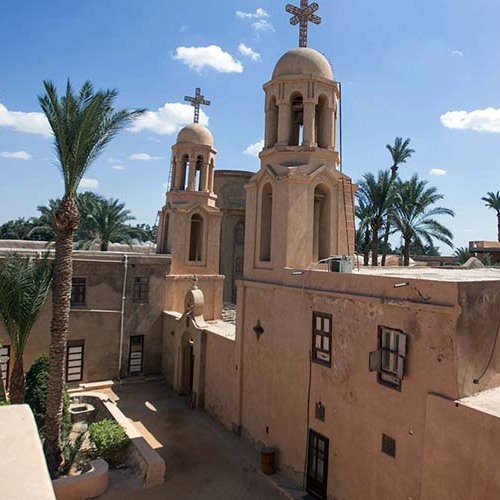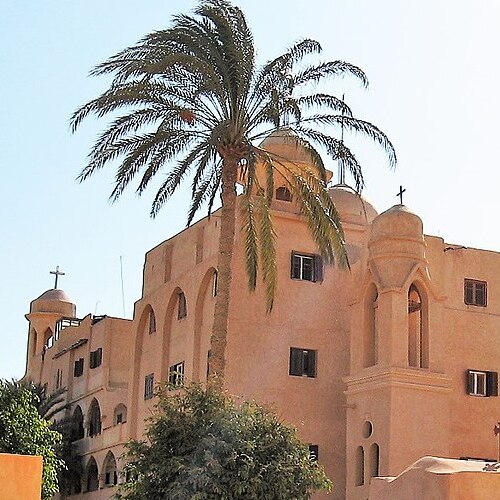No other nation in the world says ‘Welcome’ as often as the Egyptians, and every time, they mean it. While the ancient civilization of Egypt continues to amaze, contemporary Egyptians are equally remarkable.
Paromeos Monastery
Paromeos Monastery (Baramus Monastery) in Wadi Al Natron
The Paromeos Monastery, also known as the Baramus Monastery, is a significant Coptic Orthodox monastery with a rich history dating back to the early Christian era. Located in Wadi El Natrun (the Nitrian Desert), Beheira Governorate, Egypt, it holds a prominent place among the monastic communities in the region. Here is an introduction to this ancient monastery:
Location and Dedication
- Situated about 9 km northeast of the Monastery of Saint Pishoy, it is the most northern of the four current monasteries in Scetes.
- The monastery is dedicated to the Virgin Mary.
Etymology and Foundation
- Founded around 335 A.D. by Saint Macarius the Great, it is likely the oldest of the Scetes monasteries.
- Its name, Pa-Romeos or ‘that of the Romans,’ is thought to reference Saints Maximus and Domitius, sons of Emperor Valentinian I, who resided at this site.
Historical Significance
- It served as a spiritual haven for many early Christian saints, including Saint Isidore and Saint Moses the Black, who was martyred in a raid in 407 A.D.
- The monastery has undergone destruction and rebuilding, notably by Saint Arsenius after attacks in the early 5th century.
Structural Developments
- In response to attacks, walls were built around the monastery during Pope Shenouda I of Alexandria’s tenure (859-880), which still stand today.
- The monastery’s history was documented by several travelers and historians, providing insights into its evolution.
Modern Developments
- Today, the monastery houses five churches, with the oldest dedicated to the Virgin Mary, containing relics of Saint Moses the Black.
- It has been subject to numerous renovations and additions, including a retreat center and a guesthouse.
Ruins and Archaeological Discoveries
- Archaeological research has uncovered remnants of defensive structures and churches, providing a glimpse into the monastery’s early construction and use.
- Excavations have revealed a complex history, including possible connections to ancient Egyptian monuments.
Current Leadership
- As of 1992, the Bishop and Abbot of the Paromeos Monastery is Bishop Anba Isidoros.
The Paromeos Monastery is not just a religious site; it is a testament to the enduring legacy of Christian monasticism in Egypt, with its blend of historical, cultural, and spiritual significance. It continues to attract pilgrims, historians, and tourists alike, offering a unique window into the early Christian era in Egypt.
Created On March 18, 2020
Updated On Aug , 2024
Wadi Al Natron Travel Guide



